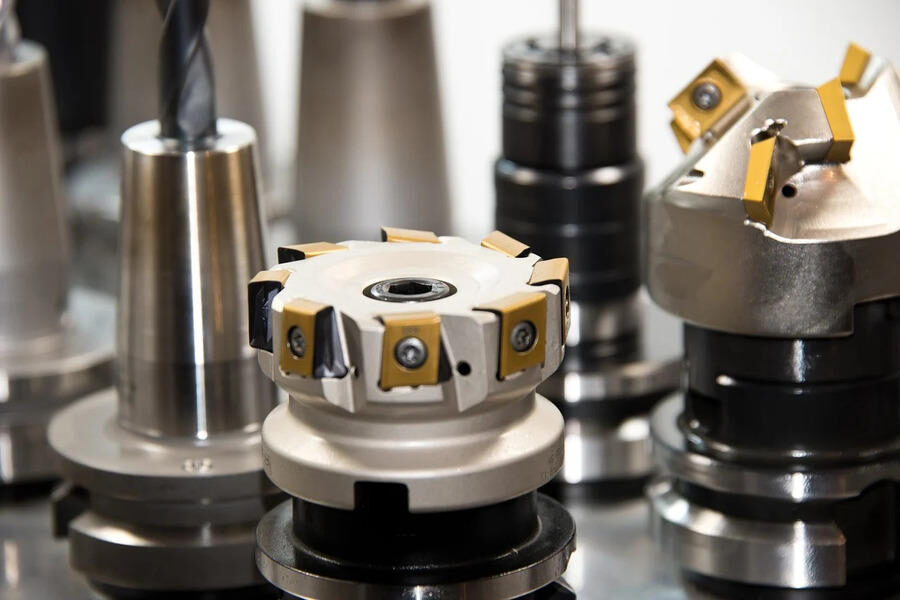Mechanical milling is one of the many processes performed in precision workshops to create aesthetically refined products. It is used for chip removal and is carried out using specific tools, called milling machines.
In this article, we will delve into what mechanical milling is, what it is used for and what CNC milling machines are meant to be.
What is Mechanical Milling?
The term milling refers to the set of activities required for chip removal, carried out by the application of a tool with defined geometry and rotary motion.
Specifically, milling works by subtraction and makes it possible to obtain a wide range of surfaces, such as planes, shoulders, holes, grooves and more, characterized by high precision and an excellent finish.
The main parameters of mechanical milling operations are the cutting speed, from which the cutter rotation speed is derived, and the workpiece feed rate, usually expressed in microns or hundredths of a millimetre.
Mechanical Milling: the various machining stages
The initial phase of mechanical milling involves so-called roughing, aimed at removing a large amount of excess material as quickly and economically as possible. The objective at this early stage is to remove metal parts or other materials that are not needed to realize what has been commissioned.
To understand how exportation takes place, one could draw a parallel between the milling machine and the drill: through the rotary cutting motion of the tool, accompanied by the translatory feed motion of the workpiece, the material is eroded, in a manner not dissimilar to the way in which holes are drilled with the drill.
Roughing is followed by finishing, which allows, through the removal of a smaller volume of metal, the production of precision mechanical products that conform to the initial design in terms of dimensions, tolerance and surface roughness.
The Milling Machine: Features and Advantages

The specific tool used in precision machining is called a milling machine, consisting of the following parts:
- Base: as the name suggests, this is the table where the part to be milled is laid and fixed.
- Motor: usually small but remarkably powerful.
- Milling cutter: this is a cylindrical tool, attached to the motor via a spindle, equipped with cutting teeth that rotate on the axis of the milling cutter. Depending on the purpose, one can choose cutters of various shapes and sizes: cylindrical, truncated cone, spherical or special shapes.
The main advantage of mechanical milling machines, in fact, is their ability to produce a large number of shapes and to be able to perform, with a single work program, multiple operations, even very different and complex ones, such as grinding, cutting and reaming.
Depending on the orientation of the tool, horizontal milling machines are distinguished from vertical milling machines. The former have the spindle mounted horizontally, while the latter have the cutter mounted vertically.
As far as fundamental characteristics are concerned, there are two that must not be lacking in a professional milling machine: the ability to move along the entire surface of the workpiece and the solidity required to absorb the considerable vibrations generated by the motorized head without allowing it to oscillate or shake.
Numerically Controlled Milling
In recent years, and thanks to the many steps taken by technology, modern numerically controlled machinery has been introduced in precision machine shops.
CNC milling machines (an acronym that stands for 'computer numerical control') work in an automated manner, executing instructions given to them by technical staff. The operator communicates information about the product to be manufactured to the machine, checks for faults or malfunctions and intervenes if and where necessary.
The result is a clear reduction in working time and related costs, increased productivity, accompanied by a margin of error that is essentially close to zero, and mechanical products with a very high degree of precision.
What is the purpose of Mechanical Milling
Today, precisely because it is capable of producing state-of-the-art items, mechanical milling finds many areas of application and is widely used for the production of non-symmetrical shaped measuring elements, with grooves or holes, semi-finished products or small batches.
The G. Bonanomi Srl precision mechanical workshop offers milling services contract on any mechanical part. Using a state-of-the-art machine park and a team of experts, the company partners with the world's largest tool manufacturers and performs milling operations on workpieces up to 10 m in length.
In conclusion, as far as products are concerned, Bonanomi manufactures dressing plates, test benches, surface plates, clamping squares, clamping cubes and plates, control blocks and cylinders as well as mouting or assembly boxes and support and levelling columns of any size.
